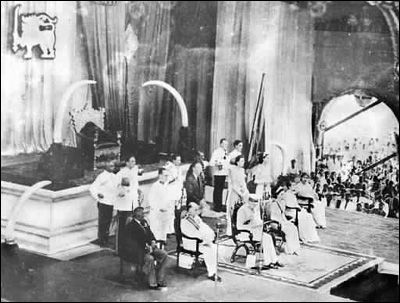
Publisher:
Bonnie King
CONTACT:
Newsroom@Salem-news.com
Advertising:
Adsales@Salem-news.com

~Truth~
~Justice~
~Peace~
TJP
Nov-04-2011 11:52

 TweetFollow @OregonNews
TweetFollow @OregonNews
We the Sinhalese
Sunela Jayewardene Special to Salem-News.comThe infamous ‘Sinhala Only’ cry of 1956 has had a long-ranging negative impact.
 Ceylon Superb Sinhalese Women Skeen 1880. Image courtesy Lankapura |
(COLOMBO, Sri Lanka) - An oyster sucks in particles from its environment and creates a pearl. If instead, it filters out every particle, it is destined to be a lesser being.
In untold generations, the Sinhalese people were fashioned from extraditions, waves of invasions, conquered kingdoms and stranded travelers to this fecund island. They are the children of exiles, conquerors and refugees, some noble and often not…. They are begotten of peoples who have absorbed and yielded, been besieged and withstood and been enriched, pearl-like.
In time the Sinhalese defined themselves as a race and a culture that can be distinguished from the cultures of India. This is laudable in the face of that overshadowing mass. We have swum through multi-colored waters and still stand as a discernible ethnicity…but are we quite as boldly discernible and as splendidly isolated as we believe? Our outline has to have merged and blended with the communities we have mingled with; the aboriginal, australo-negroid Veddha, Dravidian conquerors, prisoners and laborers, the Moorish traders and sailors from the Arabian land mass and the mercenaries from the Indonesian archipelago who fought for the Kings of Lanka, European conquerors and missionaries, Chinese merchants and African pearl divers, tourists… who surely sowed their seed! The undoubted genetic infusions could only have embellished us! And embellished, we have emerged as a discernible race. It is as this discernible race that we encounter the perils of isolation.
It is true that Rulers of a nation have the privilege of defining ethnic strata and often isolating ethnic groups. So easily is this done that worldwide, ethnic definition has always been a common and deliberate tool in political manipulations. For Sri Lankan leaders, in the process of ruling the island that dangles off the Indian subcontinent, definition has sometimes been inevitable; dangling precariously close, in times when that massive nation has decided to worry us like a bone in the teeth of a bitch, ethnic definition has even been necessary. But, stratifying ethnic groups is a dangerous game; the players forget they are playing.
 The ceremonial opening 10 February 1948 of Sri Lanka's first parliament |
Over the centuries, in Sri Lanka, the stratification of ethnic groups has varied from sharp, crystalized layers polarized by their distinctions, to rare times when the ethnic layering became soft, like melting jaggery. In recent memory, the last time the island people’s ethnicity was blurred was during the colonial era. Confronted with a common enemy, diverse ethnic communities recognized commonalities and faced the invasive western culture. Eager and passionate nationalists of all Sri Lankan ethnicities filled the vacuum created in 1948 by the departure of the British. But as soon as the majority voice formulated, the ardor of the minority politicians cooled. Now rid of the imperialists, ethnic divisions swirled back in to sharp focus.
Post independence, the island’s rulers have been the majority Sinhalese. Too many times these leaders have over reacted and ridden the wave of ethnic definition that easily surfs in to the dangerous waters of ethnic superiority. Standing in the foreground, we the Sinhalese, often nudged by politicians, intoxicate ourselves with doses of ethnic superiority. In addition, sections of the Buddhist clergy, who have forgotten that ‘Tolerance and Equality’ are the hallmarks of Buddhism, have curiously linked themselves to Sinhala chauvinism; if the politicians happen to forget then, members of the Buddhist clergy will raise the banner of the purported pure Sinhala race. This has created a hierarchy even amongst the Sinhalese with the Christian Sinhalese feeling less of a sense of belonging.
With the infamous ‘Sinhala Only’ cry of 1956, instantly, like a bathtub plug being pulled, hoards of non-Sinhalese Sri Lankans drained out of the country. The majority who left then, were Burgers; descendants of the intermix of Sri Lankans with Portuguese, Dutch and British colonials. Their lingua franca had been English and as they emptied out of villages and towns island wide, that they had inhabited for centuries, they took with them the ready access the Sinhalese had to the international language. That wave of ethnic definition impacted on the Sinhalese a generation later with a dearth of English speakers.

The largest ethnic minority, the Sri Lankan Tamils took longer to respond to the frequent underscoring of Sinhala priorities. Their ultimate reaction hatched the violent LTTE that viciously protracted a civil war for almost 3 decades. As the LTTE raised its head and bared its teeth, the Sinhalese initially lashed back with horrendous ethnic rioting that left all minorities petrified by its portent. But the anguish of the Tamils, who were the focus of the riots, drove them not only off our shores but further, to find resonance with the bloody LTTE. In 2009 the LTTE was finally defeated and the Sinhalese have not yet paused to examine the damage.
The Tamils, in the longest association with the Sinhalese had formed a cultural fabric too tightly interwoven to define origin. Our cuisine, our clothing, our arts & architecture were the reflection of the Dravidians who we had communed with, but in adoption as, it was blurred and simplified by Buddhism, it acquired an individuality. Our religious practices, from the boiling of milk to incense and light carried the Hindu influence that had lent ritual to the spartan Buddhist philosophy when the Sinhalese metamorphosed it in to a religion. Our language was where we were most clearly distinct but even so, its muddled linguistic root made us aware of our compatriot Tamils.
In the early part of the 20th Century as we Sinhala, Tamil and Muslim, stood shoulder-to-shoulder, to face down the British and be rid of colonialism, we were Sri Lankan or rather still obediently, ‘Ceylonese’. This was a common patriotism that spelled a common love for this country. This was until, slowly, in the process of leadership, we alienated the minority races.
 Tamils, Sinhalese, Moors, Malays and Burghers of Sri Lanka once lived in peace. |
In older generations of Sri Lankan diaspora, the love of a distant homeland, lingered. Frequently emails were circulated, recalling life in the land they left behind. Whenever opportunity arose many of these emigrants would return, despite the absence of friends and family, simply to revisit their old country. In their lives in foreign lands, even the most well adapted emigrant would easily lapse in to recollections of a faraway lifestyle. In the forested garden of a country home in upstate New York, belonging to Sri Lankans who had left the island over half a century ago, I was introduced to a pair of white-tailed deer named Maan & Muva. In this inseparable pair of deer, bearing the Tamil and Sinhalese monikers for ‘deer’, I saw a lost dream!
In the post-war resettlements in northern Sri Lanka, I encountered Muslim children who cheered not for the Sri Lankan cricket team but Pakistan! When had this affiliation to a foreign land begun? I had grown up with close family friends who were Muslim and their affinity to Sri Lanka, the land and its politics, was no different to what was inculcated in me. Perhaps subtle changes had gathered momentum and with the establishment of ethnically defined political parties and the fundamentalism sweeping the Muslim world, the Muslim youth of Sri Lanka had reached a tipping point.
I wonder if there is still time to retrieve and include them in our future? As I sat in the blistering heat and dust of a temporary school in newly resettled, post-war Mannar and listened to the school boys reel off names of their favorite cricketers, “Afridi! Khan! Shah… Malinga!” I thought there was still a glimmer of hope, if only we consciously tried.
We the Sinhalese had borrowed from and shared with all the other races we had encountered in the many millennia it took for us to emerge as this distinct race. Now, we certainly had reached the plateau in our status as the superior race on our little island. However, as we continued trying to distinguish ourselves by highlighting our differences, I felt we would only lose from denying ourselves the nourishment that the intermingling of races allows. With these constant racial efforts we have alienated many and deprived our selves of so much that could have spiced our lives. We have made minorities who have inhabited this island as long as we have, feel secondary and less welcome. In doing so, have we deprived ourselves of the huge benefit of all Sri Lankans being equally patriotic?
With pluralism so deeply embedded, whenever we have tried to isolate ourselves the surgery has been intensely painful. Anyway, why do we try as, we will only be poorer if, we divest ourselves of the enhancement that the Muslim cuisine adds to our lives, the solace that the Hindu Gods offer many a Sinhalese, the wild side that the Veddha adds to our cultural pageants, the joyous baila music of the Burghers…. As we crystallize our distinct race and shrug away our previous influences perhaps we should pause and examine what we deny ourselves…. What will we find? A minute race isolated with nothing further to nurture it? In years to come, as we stand on our tiny island, eclipsed and isolated through our own insistence, will we the Sinhalese wonder if this is what we really sought? A race silenced by its own cries for isolation and no meter to measure its distinction.
 |
 |
 |
 End Israel's Unwarranted Murder of Kids |
Articles for November 3, 2011 | Articles for November 4, 2011 | Articles for November 5, 2011
Salem-News.com:


googlec507860f6901db00.html


Terms of Service | Privacy Policy

All comments and messages are approved by people and self promotional links or unacceptable comments are denied.
[Return to Top]
©2026 Salem-News.com. All opinions expressed in this article are those of the author and do not necessarily reflect those of Salem-News.com.